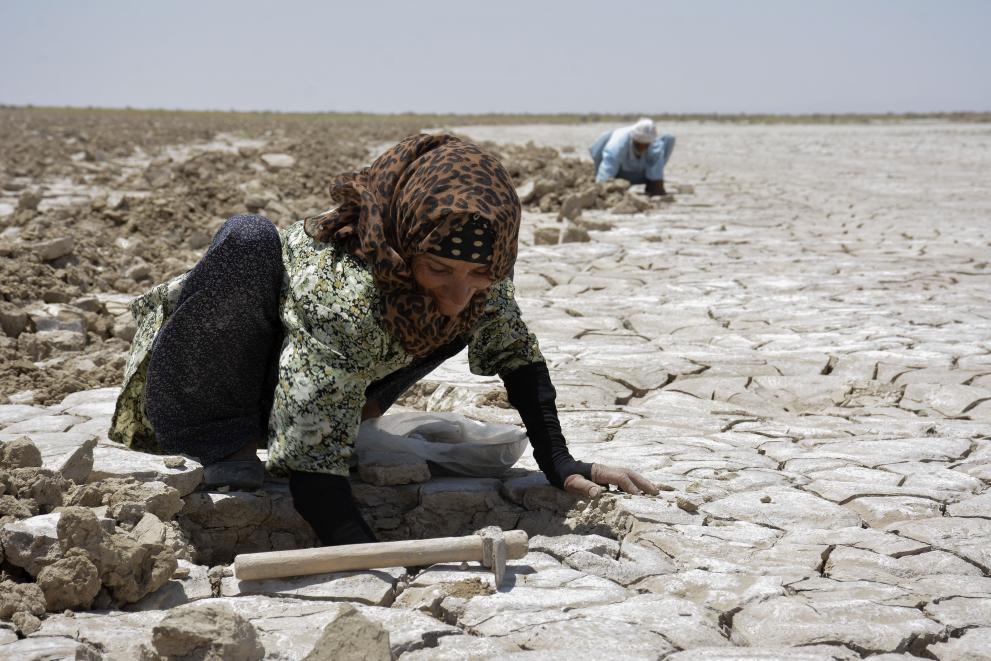Mohammad, 53, is a retired educator turned environmental activist. He’s spent his whole life in the Sistan region of south-eastern Iran. It’s an area dominated by the Hamoun Wetlands – transboundary bodies of water shared between Iran and neighbouring Afghanistan. They consist of three separate lakes that join to form one large wetland when completely under water.
The Hamoun Wetlands are central to every aspect of life in the region. Historically, local communities in the area have relied on natural resources for their livelihoods, which includes agriculture, animal husbandry, fishing and handicraft making. “People living around the wetland were affluent because they did not need anything. They would only buy flour to make bread; or maybe occasionally purchase sugar cubes… All else was found in the Sistan area, meat, poultry, fish, fruits, you name it,” says Mohammad.

Hamoun is our breath, our hope, our food. Hamoun is our life… Hamoun is the life of Sistan. In the absence of industries and employment opportunities, Hamoun is also our industry, it is our employment… when Hamoun has water, there is peace. When people can fish… it brings a sense of security.
Mohammad
But the Hamoun Wetlands are under pressure, with climate change and unsustainable management of natural resources having a negative impact on the livelihoods of local communities, especially in rural areas, and contributing to the displacement of families. The impact is increasing multi-dimensional poverty and unemployment.
The Sistan area is a topographic-low basin close to the Iranian border with Afghanistan. Sistan is extremely arid and known for its windstorms, extreme floods and droughts. Natural and human factors have contributed to extreme drought lasting 20 years.
Mohammad says many natives of Hamoun who are now in their forties have migrated, for instance to peri-urban areas of big cities in search of jobs. Many of them, including his own children, are employed as farmhands or factory workers.

Many villages around the wetland were completely abandoned (within the two dry decades). Still, whenever the wetland is under water, some people return. With water comes hope.
Mohammad
The United Nations Development Programme (UNDP) is endeavouring to ensure that hope in the Sistan area blooms into a stable future.
In 2020, the European Union and UNDP Iran joined forces with Iran’s Department of Environment (DoE) to help rural communities in the area, including around the Hamoun Wetlands basin, to establish more sustainable climate-smart livelihoods and increase their resilience in terms of natural resources management. The project is also expected to help address regional challenges, such as sandstorms and dust storms that threaten the health of the inhabitants.
Conservation alone will not work; an integrated approach that focuses on incentives and livelihoods for local populations that are environmentally friendly is needed. All partners are also aiming higher by identifying green jobs and opportunities for engagement to reduce the pressure on natural resources and to restore ecosystems.

The Sistan Project’s participatory approach makes use of local community knowledge, alongside the services of technical and academic experts to make a tangible and durable impact. It is expected that through our joint efforts we will achieve:
- improved sustainable management of land and water resources
- improvement of the local economy through development and support to micro, small and medium-sized enterprises (MSMEs) in 120 villages in the area
- improved water use and conservation through climate-smart agriculture practices

